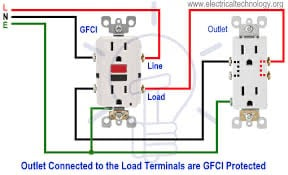The Future of Ground-Fault Protection: NEC Trends and Safety Drivers
Ground-fault protection has come a long way since the first GFCI was required in bathrooms in the ‘70s. Today, every edition of the National Electrical Code (NEC) expands the reach of ground-fault protection—and with good reason. As our homes, commercial buildings, and industrial sites become more electrified and interconnected, the risks increase alongside the technology. Let’s look at where ground-fault protection is headed, the NEC trends driving the changes, and what safety pros and electricians need to know to stay ahead of the curve.
PRO ACCESS
4/10/20252 min read


Why Ground-Fault Protection Keeps Evolving
A ground fault occurs when current leaks outside its intended path—often to a grounded surface or even a person. Without proper protection, this can lead to serious shock hazards or fire. Ground-fault circuit Interrupters (GFCIs) and Ground-Fault Protection of Equipment (GFPE) devices have saved countless lives and prevented untold damage over the years.
But the need for expanded coverage is driven by several modern realities:
• Increased outdoor and wet-location use of electricity
• Electrification of vehicles and charging infrastructure
• More sensitive electronic equipment requiring fine-tuned protection
• A push toward standardized safety across all occupancy types
NEC Trends Shaping the Future
1. GFCI Expansion into New Areas
Each code cycle sees GFCI requirements applied to more spaces. In recent years, the NEC has added:
• Basements (finished or unfinished)
• Outdoor HVAC condenser outlets
• Lighting outlets in crawl spaces
• 250-volt receptacles in garages and laundry areas
Expect this trend to continue. The 2026 NEC is already hinting at broader applications, including GFCI protection for hardwired appliances and expanded coverage for multi-family dwellings.
2. Lower Thresholds for GFPE
While GFCI is for personnel protection (typically at 4–6 mA), GFPE devices (30 mA or more) are designed to prevent fires and damage to equipment. In commercial and industrial settings, the NEC is slowly nudging designers and engineers toward lower trip thresholds and broader application of GFPE, especially for:
• Commercial kitchens
• IT server rooms
• Large motor installations
Lower thresholds mean more sensitive protection, leading to earlier fault detection and improved equipment longevity.
3. New Protection for EV Infrastructure
Electric vehicle chargers present their own safety challenges. These systems handle high currents and are often installed outdoors or in semi-protected locations.
The NEC has already begun implementing GFCI requirements for EV chargers up to 100A, and future cycles may extend this to bidirectional chargers and commercial charging banks. With Level 3 chargers popping up everywhere, ground-fault detection will be critical in both utility-scale and residential applications.
4. Smart Protection and Integration
As buildings get smarter, so do safety systems. Expect smarter GFCIs and GFPE breakers integrating with building management systems (BMS), SCADA platforms, or mobile alerts. These systems can:
• Pinpoint fault locations
• Send real-time trip alerts
• Provide usage and fault analytics
• Allow remote reset (with safeguards)
This smart integration improves safety, reduces downtime, and supports predictive maintenance strategies.
5. A Shift Toward Whole-Circuit Protection
We already see signs that the NEC will increasingly favor breaker-based protection over device-level GFCIs. Whole-circuit ground-fault breakers simplify installation, reduce the number of devices in the field, and offer higher centralized monitoring.
Contractors and designers should anticipate more mandates for GFCI or GFPE breakers in:
• Kitchens and bathrooms
• Outdoor circuits
• Laundry circuits
• Pools, spas, and fountains
What It Means for Electricians and Contractors
Here’s what pros in the field should be doing right now:
• Stay ahead of the code. Don’t wait for code enforcement to upgrade your practices. Protect it if it’s a known hazard—even if it’s not yet required.
• Use smart GFCIs when possible. They may cost more but save headaches (and callbacks) in the long run.
• Educate clients. Many homeowners and business owners don’t understand why their GFCI trips. Help them understand what it’s protecting and why it’s required.
• Plan for adaptability. Choose panels, breakers, and wiring methods that will facilitate code compliance in the future.
Final Thoughts
Ground-fault protection isn’t just a code requirement—it’s a life-saving technology that evolves with our built environment. Electricians must do the same as the NEC continues to adapt to changing hazards. The future of ground-fault protection will be more widespread, more sensitive, and more intelligent.
And that’s a future worth wiring for.
ShockTalk: Your Code-Safe Guide
We help electricians, contractors, and DIYers build safer systems with real-world electrical expertise and simplified NEC guidance.
Expertise
Want Tips from a Master Electrician?
Email: info@shocktalk.org
Support Hours: Mon–Fri, 8am–6pm CST
817-716-1579
© 2025. All rights reserved.
